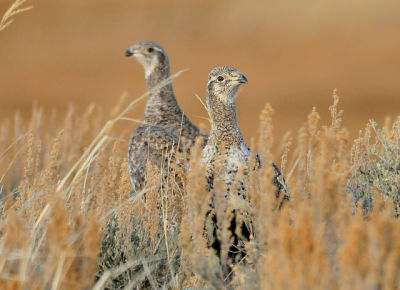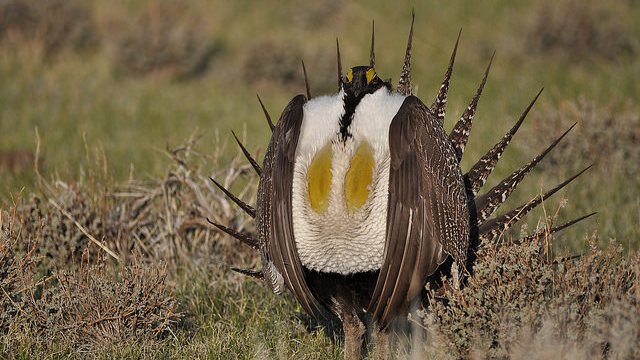Featured Media Resource: AUDIO: Lawsuits Will Be Next Battle In Sage Grouse Conservation Saga (NPR)
The U.S. Fish and Wildlife Service decided not to protect the sage grouse under the Endangered Species Act, but there are already challenges to the decision.
Do Now U
Should the greater sage grouse have been listed as endangered? What is more important, the health of an ecosystem or an economy? Do you think this is a false duality? #DoNowUGrouse
How to Do Now
To respond to the Do Now U, you can comment below or post your response on social media platforms such as Twitter, Instagram, Tumblr, Vine, Flickr, Google +, etc. Just be sure to include #DoNowUGrouse and @KQEDedspace in your posts.
Learn More about the Sage Grouse Decision
On September 22, 2015, the U.S. Fish and Wildlife Service announced that an endangered species listing is “not warranted” for the greater sage grouse, an iconic species of the American West. Findings state that the bird is well distributed across much of its range, is “relatively abundant” and is not at risk of extinction now or in the foreseeable future. The decision followed years of a passionate debate between environmentalists, scientists, landowners, ranchers, the oil industry and others across the West.
People advocating for the bird to be listed under the Endangered Species Act (ESA) pointed to the decline of the population. There are about 400,000 sage grouse remaining, a fraction of what the population once was. Over a span of only seven years from 2006-2013, the population decreased by more than 50 percent. Studies in the mid-2000s proved that this rapid decline was mainly due to the negative effects of oil retrieval and gas in these states. The sagebrush ecosystem, the backdrop of old Westerns, once covered 500,000 square miles. Now, it’s size has shrunk by half, and it is greatly fragmented. It is a diverse ecosystem that supports 350 species, including migrating birds and pronghorn antelope. Natural gas, oil, coal, cattle ranches, and other building projects have fragmented the system, leading to roadkill and devastating barriers. Greater sage grouse rely on extensive amounts of sagebrush for survival and have had their short distance migration impeded. They must move to wetter areas in summer, many of which have been taken over by humans. The greater sage grouse is an “umbrella” species, which means its health is indicative of the health of the entire ecosystem. According to the Washington Post, a listing of the greater sage grouse would have put into place mandatory protection efforts that would have, in effect, conserved the sagebrush ecosystem.
 [/media-credit]
[/media-credit]Industries were opposed to an ESA listing for the sage grouse, saying that the birds weren’t in risk of going extinct and a listing would have cost billions of dollars to the economy of the rural West. Protecting the greater sage grouse under the ESA would have severely limited activities within its sagebrush habitat, such as cattle grazing and energy development. The economic implications of shutting down development in this area would be massive. There are solar and wind farms across the range, drilling for oil and natural gas, and even a gold mine in Nevada. The 11 states where sage grouse live–Montana, Idaho, Wyoming, Oregon, Nevada, Washington, California, Utah, Colorado, South Dakota and North Dakota–would have also been economically impacted by an ESA listing of the bird. “If the hunters can’t hunt, if the miners can’t mine, if you don’t have that capital, then you lose, “ said Leo Drozdoff, director of the Nevada Department of Conservation and Natural Resources. The 11 states would have been looking at a $1 billion tab in conservation costs, which Drozdoff referred to as “almost insurmountable.” The states set up a task force in 2011 to work with the Fish and Wildlife Service to coordinate conservation plans in order to avoid a listing.
